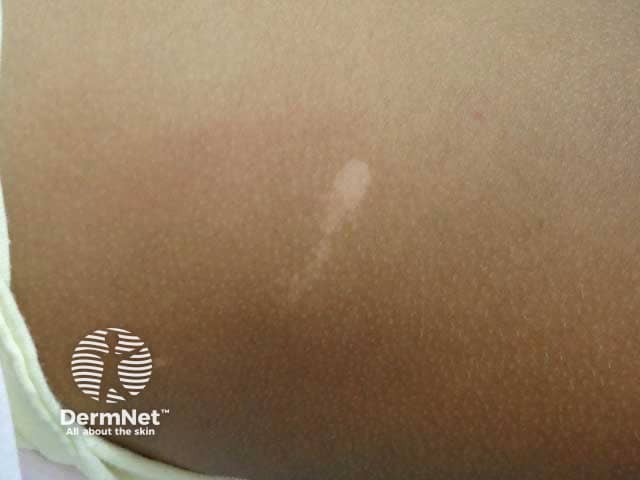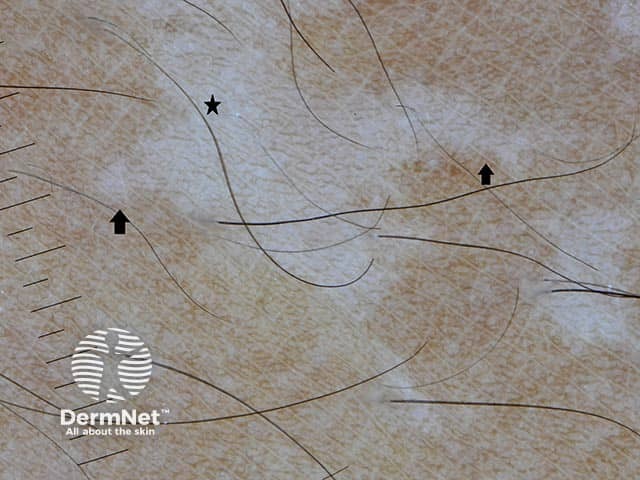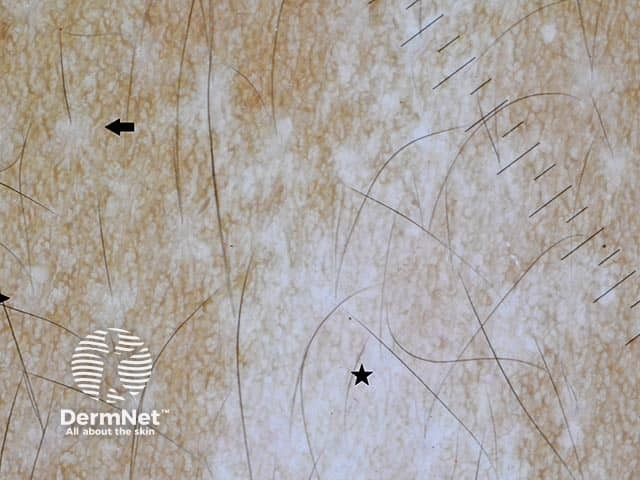Main menu
Common skin conditions

NEWS
Join DermNet PRO
Read more
Quick links
Lesions (benign) Diagnosis and testing
Author: Professor Balachandra Ankad, Department of Dermatology, S Nijalingappa Medical College, Bagalkot-587 103, Karnataka, India. Copy edited by Gus Mitchell. December 2020.
Introduction Clinical features Dermoscopic features Histological explanation Differential diagnoses
Achromic naevus, also called naevus depigmentosus or hypochromic naevus, is a pale (hypopigmented) birthmark due to an abnormal clone of melanocytes with an impaired ability to transfer melanosomes to keratinocytes.
Achromic naevus presents in the neonate or early childhood period as a flat pale hypopigmented macule with a characteristic serrated border.

Achromic naevus on a limb showing the serrated border


An irregularly marginated unilateral depigmented area on the right side of the face; now termed segmental pigmentation disorder
On dermoscopy, an achromic naevus appears as a white structureless area with an irregular serrated border and pseudopod-like extensions. There is a faint but normal reticular pigment background throughout. Hairs within the lesion are of normal colour with perifollicular pigmentation. Pigmentation in the surrounding skin is normal with no hyperpigmented border.

Dermoscopic image of achromic naevus on the trunk in skin of colour - white structureless areas (star) are demonstrated

Dermoscopic image of achromic naevus on the trunk in skin of colour - white structureless areas (star) are demonstrated
The histology of achromic naevus shows a normal or slightly reduced number of melanocytes with reduced melanosomes in the keratinocytes. The white structureless areas seen on dermoscopy of achromic naevus correspond with reduced melanin in the epidermal keratinocytes. The faint reticular pigment network indicates melanin remaining in the melanocytes.